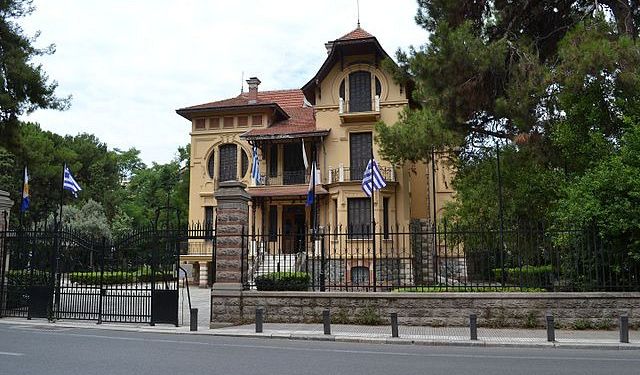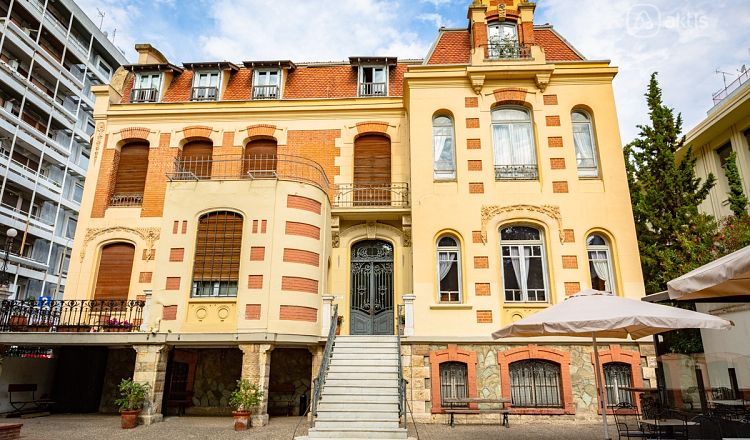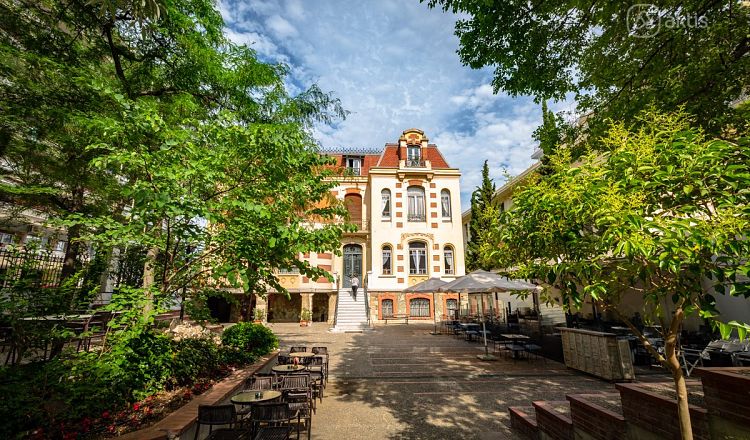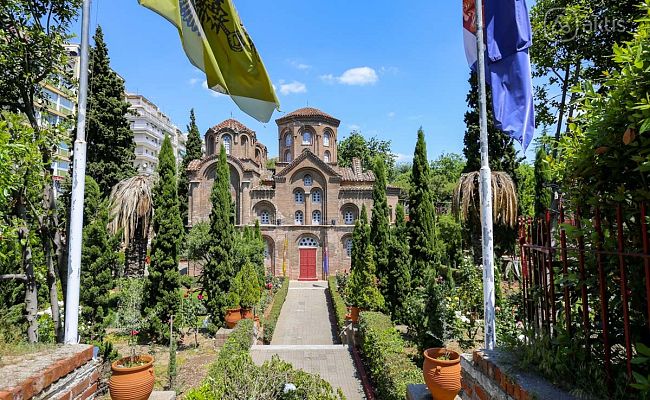The rich history of Thessaloniki spans several millennia, encompassing various historical epochs. While it is renowned for its Roman and Byzantine landmarks, the city also boasts remarkable mansions dating back to the 19th and early 20th centuries. Each of these mansions encapsulates its own unique narrative, offering glimpses into Thessaloniki's vibrant social past.
Casa Bianca
Nestled near the waterfront in the western district of Thessaloniki stands one of the city's most exquisite mansions, boasting an eclectic architectural style. This villa holds within its walls a tale of love that once captured the hearts and imaginations of the entire town.
Constructed between 1911 and 1913, Villa Bianca was commissioned by the affluent Italian industrialist of Jewish descent, Dino Fernadez Diaz. It is believed that the mansion was a wedding gift for his wife Blanche (Bianca) Meyer, from whom it took its name.
The couple had a daughter, Aline, who fell in love with the Greek military man Spyros Alibertis. For the conservative society of Thessaloniki at the beginning of the twentieth century, the relationship between a Jew and a Christian was a sensation. Aline's parents also objected to her relationship, as they were concerned about her having to convert to her lover's faith in order to marry him.
Unable to withstand the pressure, the couple secretly fled to Athens, where they got married. After some time, the scandal died down, and Alin and Spiros were able to return home. However, Villa Bianca faced an uncertain future.
In 1941, the entire family was compelled to flee, leaving their magnificent mansion behind. Soon after, it fell into the hands of first the Italian consul and then the Germans. Unfortunately, the original owners never reclaimed their residence. Over time, the villa changed ownership multiple times, falling into disrepair with talks of demolition looming. Yet, against the odds, the building was eventually restored. Today, it serves as an art gallery, while its enduring garden hosts a charming café, offering visitors the opportunity to dine amidst the ambiance of bygone eras.
Dark past of the Logos Mansion
One of the most mysterious buildings in the city, the Logos mansion hides many secrets. It was built in 1928 in the very center of Thessaloniki, opposite the ancient Church of Hagia Sophia. The location was not chosen by chance - the majestic red mansion became part of the new look of the city after the fire of 1917, which almost completely destroyed the entire center.
The customer was a wealthy businessman Ioannis Logos, who moved to Thessaloniki with his wife from the town of Naoussa. Their new mansion immediately attracted a lot of attention. The building combined eclectic and Byzantine styles and was richly decorated with bas-reliefs.
However, the mansion did not bring happiness to the couple. Almost immediately after construction, misfortunes began to happen to the owners. The thriving Lagos textile mill at Naoussa suddenly burned down. A few years later, the industrialist himself died, followed by his wife. In addition, the large company involved in the construction of the mansion also soon declared bankruptcy.
So many mysterious accidents gave rise to various rumors. The townspeople were talking about the curse of the Logos mansion, as well as ghosts and vampires supposedly living there. Some even said they saw an elderly couple entering the house without a key.
Nevertheless, the Logos mansion has survived to this day in excellent condition thanks to recent restoration. It was bought by a Greek businessman, owner of the PAOK football club, Ivan Savvidis. Today there is little reminder of the dark past of this mansion, which adorns the very center of Thessaloniki.
Epavli Marokkou
Yet another iconic Thessaloniki mansion, boasting neoclassical elegance, was constructed in 1906 for the Austrian Ioannis Morocco. Enduring the turbulent events of the twentieth century, the villa underwent numerous changes in ownership. Eventuall, it came under state ownership and recognition as a protected monument, representing an integral part of the city's cultural heritage.
In a recent development in 2018, the mansion underwent extensive restoration. Today, its pristine white façade serves as the backdrop for a café, while the garden often resonates with live music. Situated on Vasilissis Olgas Street in the western part of Thessaloniki, this mansion continues to enchant visitors with its timeless allure.
Folklore and Ethnological Museum
The building of the folklore and ethnological museum dates back to 1905-1906. It was built according to the design of the famous architect of the time, Eli Modiano, who also created the central market of Thessaloniki.
The building combines Art Nouveau and eclectic styles and is distinguished by a large number of arches decorating the facade. The appearance of the mansion was inspired by the artistic trends of 19th century Paris, where Modiano studied architecture.
Today, the traditional culture of Macedonia and Thrace is presented inside. Here, visitors can explore a collection comprising approximately 15,000 artifacts, encompassing national costumes, household implements, intricate embroidery, and many other cultural treasures.














